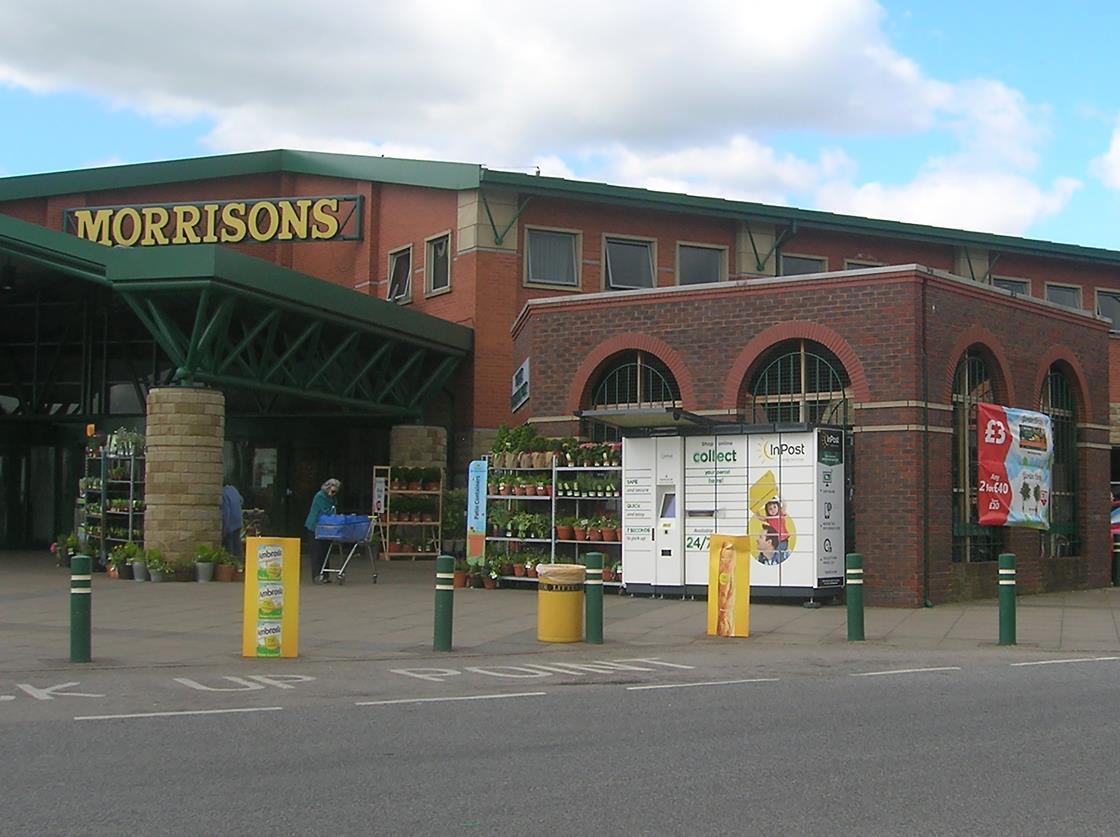The Closure Of Anchor Brewing Company: What Happened?

Table of Contents
Declining Sales and Market Competition
The craft beer market is fiercely competitive. Anchor Brewing, despite its heritage, struggled to maintain its market share amidst a surge of new breweries and evolving consumer tastes. The rise of smaller, more specialized breweries offering unique and innovative beer styles, coupled with the aggressive marketing strategies of large corporate breweries, created a challenging environment. The premium beer market, where Anchor Steam Beer resided, saw intense pressure from both ends of the spectrum.
- Increased competition from both large and small breweries: Established giants like Anheuser-Busch InBev and MillerCoors, along with a plethora of smaller, craft breweries, aggressively competed for shelf space and consumer attention. This intense competition squeezed Anchor's market share.
- Shifting consumer preferences towards newer styles of beer (IPAs, sours, etc.): Consumer tastes evolved rapidly, with a strong preference shift towards bolder, hoppier beers like IPAs and increasingly complex styles like sours and barrel-aged stouts. Anchor Steam Beer, while a classic, struggled to keep pace with these trends.
- Difficulty in maintaining market share against established brands: Anchor faced difficulty competing with both the established giants and the trendy newcomers. Maintaining brand loyalty in such a dynamic market proved difficult.
- Rising production and distribution costs impacting profitability: The cost of raw materials, labor, and distribution increased significantly, impacting Anchor's profitability and making it harder to compete on price.
While precise sales figures for Anchor Brewing aren't publicly available since the closure, industry analysts pointed to a consistent decline in sales in the years leading up to the shutdown. The brewery's inability to adapt to the changing dynamics of the craft beer market played a significant role in its struggles.
Strategic Decisions and Ownership Changes
Sapporo Holdings, the Japanese beverage company, acquired Anchor Brewing in 2017. While the acquisition initially presented opportunities, strategic decisions made under Sapporo's ownership arguably contributed to the brewery's ultimate demise. Analysts suggest a disconnect between Sapporo's corporate strategy and the unique needs of a heritage craft brewery like Anchor.
- Sapporo Holdings' acquisition and its subsequent impact on Anchor's operations: The acquisition brought with it changes in management, marketing, and potentially, a shift away from the brewery's core identity.
- Analysis of marketing and branding strategies implemented under Sapporo's ownership: Some critics argue that Sapporo's marketing strategies failed to resonate with Anchor's established customer base or attract new consumers.
- Potential shortcomings in product innovation and development: A perceived lack of investment in new product development and adaptation to changing consumer tastes might have hindered Anchor's ability to stay relevant.
- Lack of investment in modernizing brewing facilities or distribution networks: Failure to invest in infrastructure could have increased costs and hampered efficiency, further impacting profitability.
Many industry experts point to a lack of understanding of the craft beer market's nuances on Sapporo's part, leading to decisions that ultimately undermined Anchor's unique position in the market.
The Impact on the Craft Beer Industry and San Francisco
The closure of Anchor Brewing is more than just a business failure; it's a significant loss for the craft beer industry and San Francisco's cultural heritage. Anchor played a pivotal role in the American craft beer revolution, establishing itself as a pioneer and inspiring countless other breweries.
- Anchor's historical significance as a pioneer of the craft beer movement: Anchor Steam Beer holds a unique place in American brewing history, helping to pave the way for the modern craft beer industry.
- The loss of a San Francisco landmark and its impact on local tourism: Anchor was a significant part of San Francisco's identity, a popular destination for both locals and tourists. Its closure represents a considerable loss to the city's cultural landscape.
- Job losses and economic repercussions for employees and the local community: The closure resulted in job losses for numerous employees and had a ripple effect on the local San Francisco economy.
- The broader implications for the craft beer industry regarding sustainability and brand longevity: Anchor's closure serves as a cautionary tale, highlighting the challenges of maintaining brand relevance and profitability in a rapidly evolving market.
The legacy of Anchor Brewing, however, remains. Its contributions to craft beer innovation and its impact on San Francisco's identity will be long remembered. Efforts were made to assist affected employees in finding new opportunities, reflecting a commitment to supporting the community.
Conclusion
The closure of Anchor Brewing Company resulted from a confluence of factors: intense competition in the craft beer market, strategic decisions made under new ownership, and a failure to fully adapt to shifting consumer preferences. The decline in sales and the inability to maintain profitability ultimately led to the brewery's demise. This event serves as a stark reminder of the challenges facing even iconic brands in the dynamic craft beer market.
The closure of Anchor Brewing serves as a stark reminder of the challenges facing even iconic brands in the dynamic craft beer market. Learning from this case study—understanding the fall of Anchor Brewing—can help other breweries better navigate the complexities of the brewing industry and the importance of adapting to evolving consumer demands. Investing in innovation, strategic marketing, and a deep understanding of the market are crucial for survival and success in the craft beer world.

Featured Posts
-
 The 2023 Canadian Election Trumps Unexpected Impact
Apr 25, 2025
The 2023 Canadian Election Trumps Unexpected Impact
Apr 25, 2025 -
 Analysis Of Roches First Quarter Sales Growth Pipelines Key Role
Apr 25, 2025
Analysis Of Roches First Quarter Sales Growth Pipelines Key Role
Apr 25, 2025 -
 Land Your Dream Private Credit Job 5 Crucial Dos And Don Ts
Apr 25, 2025
Land Your Dream Private Credit Job 5 Crucial Dos And Don Ts
Apr 25, 2025 -
 Hyundai Profit Surges Past Forecasts Strong N American And Hybrid Vehicle Sales
Apr 25, 2025
Hyundai Profit Surges Past Forecasts Strong N American And Hybrid Vehicle Sales
Apr 25, 2025 -
 Foreign Investment Bets On Japan Prolonged Yield Rebound Suggested By Swap Market Data
Apr 25, 2025
Foreign Investment Bets On Japan Prolonged Yield Rebound Suggested By Swap Market Data
Apr 25, 2025
Latest Posts
-
 Kreasi Meja Rias Modern And Sederhana Di Rumah Tren Desain 2025
Apr 25, 2025
Kreasi Meja Rias Modern And Sederhana Di Rumah Tren Desain 2025
Apr 25, 2025 -
 Inspirasi Desain Meja Rias 2025 Gaya Modern And Sederhana
Apr 25, 2025
Inspirasi Desain Meja Rias 2025 Gaya Modern And Sederhana
Apr 25, 2025 -
 Meja Rias Modern And Sederhana Ide Desain Terkini Untuk Rumah
Apr 25, 2025
Meja Rias Modern And Sederhana Ide Desain Terkini Untuk Rumah
Apr 25, 2025 -
 Desain Meja Rias Minimalis Modern 2025 Panduan Lengkap
Apr 25, 2025
Desain Meja Rias Minimalis Modern 2025 Panduan Lengkap
Apr 25, 2025 -
 The Ultimate Guide To Childproof Makeup Storage For Parents
Apr 25, 2025
The Ultimate Guide To Childproof Makeup Storage For Parents
Apr 25, 2025
